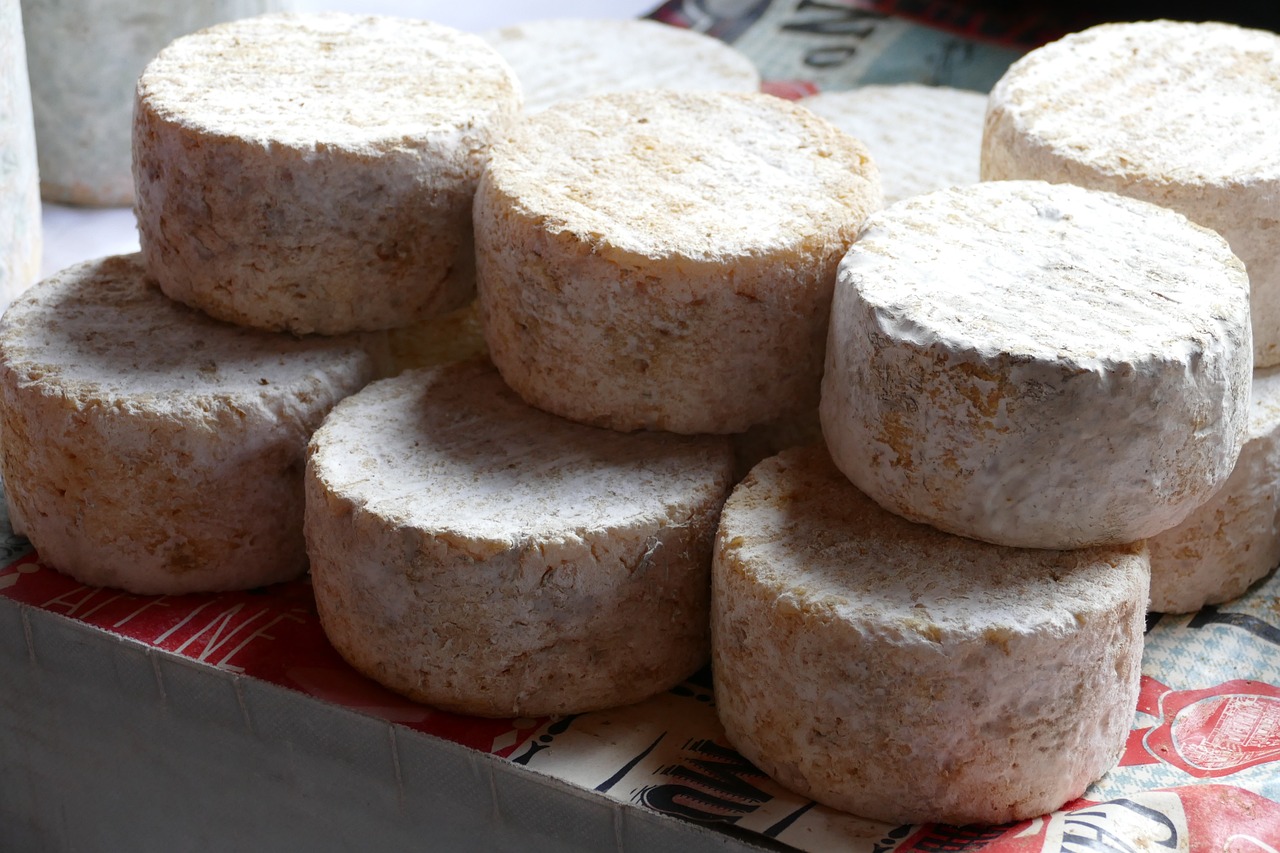Image by Eveline de Bruin from Pixabay
Les fromages (cheeses) are part of the holy trinity of French food: wine, bread, and cheese. French cheeses are the incontournables (must-know/see; lit. uncircumventable) of French gastronomy. There’s a whole world of deliciousness to discover, with over 1,200 cheeses. In fact, every region of France claims a cheese as part of its treasures. Visitors to France will most likely gravitate to some cheeses more than les fromages qui puent (the cheeses that stink), since some cheeses have the ability to turn away sensitive noses. In this post we’re going to take a look at five French cheeses that stand out. But first, a word about cheese production.
Le lait (milk)
The first thing to know about cheese is the role of the milk used in its production: la vache (cow), la chèvre (goat) and la brebis (sheep). Each of these sacred creatures imparts its signature to the cheeses made from their milk. Another important aspect is whether raw or pasteurized milk is used. (Yes, raw milk is legal in France, bien sûr.) Most common cheeses can be produced with both types, although those made with raw milk are the tastiest. Finally, the amount of time allowed for l’affinage (cheese ripening) is also a critical factor, from un fromage frais (freshly made) to un fromage affiné (optimal ripening).
AOP or Appellation d’Origine Protégée
As with other products, you’ll see the label AOP or Appellation d’Origine Protégée (Protected Designation of Origin) on certain cheeses. This is a guarantee of the savoir-faire (know-how) of a specific region. It ensures that certain steps have been followed so that each type of cheese has its own unique shape, color and texture. If you appreciate your vins (wines), you’re familiar with the similar AOC or Appellation d’Origine Contrôlée.
Le camembert
Camembert is the great classic, from cow’s milk and originally from Normandy. There are several famous ones, like Camembert d’Isigny and Camembert au calvados. Serve camembert at room temperature, perhaps along with fruit or nuts, and pair it with a Beaujolais or a red Bordeaux.
Le brie
Brie is a soft cheese, from raw cow’s milk. It’s very accessible, tame enough that even kids typically prefer it. There are many different varieties: le Brie de Melun AOC, le Coulommiers; le Brie de Meaux AOC; etc. A dry red wine is a nice accompaniment. Brie is also a main ingredient in some regional specialties, like bouchées à la reine au brie, which are individual puff pastries filled with brie, mushrooms, and shellfish.
Le chèvre
The term is actually refers to goat cheese in general, and there are countless varieties. From the hills of the Sancerre region comes the famous Crottin de Chavignol, made with raw milk and refined at least 10 days. It has a fine white or blue crust, and it’s white and smooth but firm inside. Pair it with the famous white Sancerre wine from the same region, or with other Loire white wines like Pouilly Fumé.
Le Reblochon
Reblochon is a specialty from the high mountain pastures of the Haute Savoie region. It is made with whole raw cow milk. The cheese is aged underground, turned every two days, then washed with whey, which speeds the aging process. Reblochon has a creamy texture, with a nutty aftertaste and a strong herbal aroma. Reblochon is also melted on baked potatoes, as well as with tartiflette. A Savoie white wine makes a perfect pairing, or also a fruity red wine such as Beaujolais.
L’Époisses
Made with unpasteurized curdled cow milk, this is an AOC soft cheese from the eponymous town in the Côte d’or department in Burgundy. Its crust is brushed then washed with salty water, kept in a humid cellar for a month, and washed again with Marc de Bourgogne spirit. Epoisses has a strong flavor that you can combine with a raisin bread, and then serve with a red Burgundy wine or a Sauternes.
Do you want to learn French?
Check out our other posts on French language, culture, and more. And if you’re looking for convenient and affordable live French lessons with a real teacher, check out The Language Garage. Our lessons are given online in a virtual classroom, so it doesn’t matter where you live or work. We can come to you. And we have flexible options, with a free trial so that you can decide if there’s a fit. Check us out!






